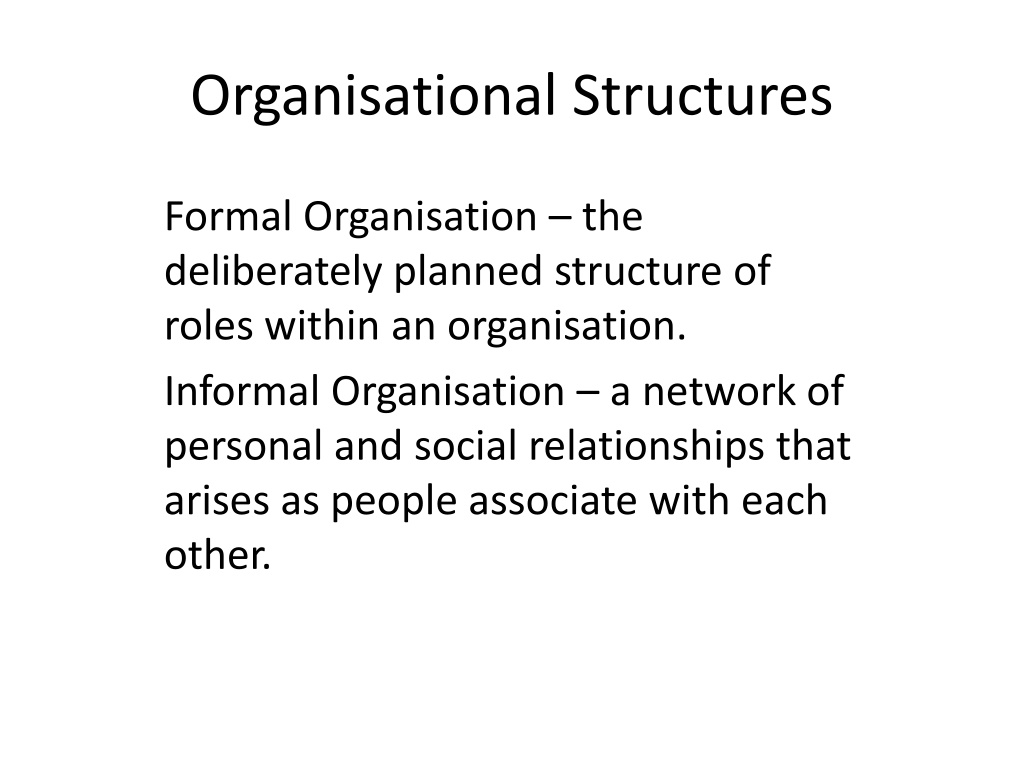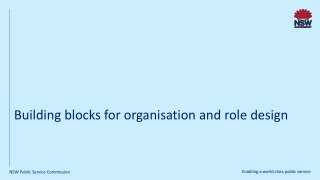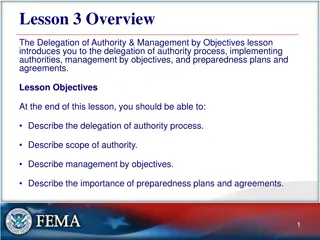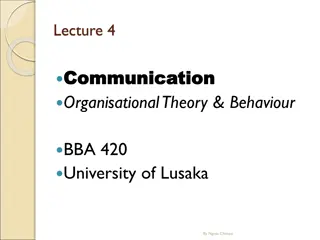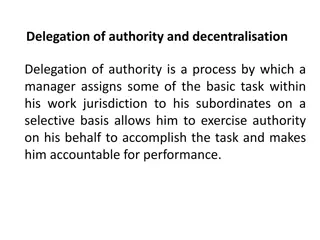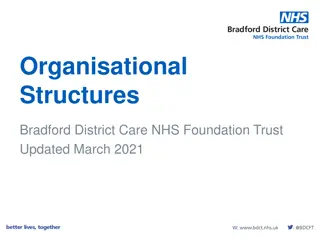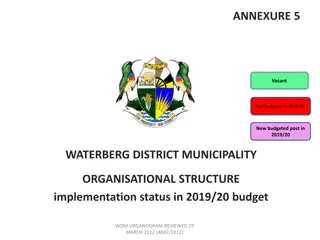Understanding Organisational Structures and Authority in Organizations
Explore the concept of formal and informal organisational structures, types of authority, chain of delegation, span of control, and the advantages and disadvantages of narrow and wide spans of control in organizations. Learn about the implications of flat versus tall organisational structures and their impact on management efficiency and adaptability.
Download Presentation

Please find below an Image/Link to download the presentation.
The content on the website is provided AS IS for your information and personal use only. It may not be sold, licensed, or shared on other websites without obtaining consent from the author. Download presentation by click this link. If you encounter any issues during the download, it is possible that the publisher has removed the file from their server.
E N D
Presentation Transcript
Organisational Structures Formal Organisation the deliberately planned structure of roles within an organisation. Informal Organisation a network of personal and social relationships that arises as people associate with each other.
Organisational Chart Is a pictorial representation of the formal organisational structure. It depicts the relationships between personnel (or more correctly between positions) within the formal organisation.
Types of Authority Line authority direct authority as it involves the right to give orders and have decisions implemented. Staff authority advisory or supportive (staff authority in military) Functional authority A right to be able to give orders in a department other than your own.
Span of Control This is the number of people directly accountable to and reporting to a manager. A narrow span has certain advantages: Close supervision of subordinates Tight control Fast communication between superiors and subordinates
Disadvantages of narrow span of control Superiors too closely involves in subordinates work. Many levels of managers (becomes a tall organisation) High costs Excessive distance between the bottom and top of an organisation
Wide span of control A wide span of control forces managers to delegate more work to carefully selected employees. Employees are given more discretion over tasks and are less closely supervised. However, this requires high quality managers if problems are to be avoided through overload and loss of control.
Flat vis Tall Structures The width of the span of control has consequences for the height of the organisation. If the span of control is narrow there will be a large number of hierarchical levels. In recent years there has been a shedding of management layers to create flatter organisations. The argument is the flatter structure will be fitter, leaner and more flexible and therefore better able to cope with a changing environment.
Tall and Flat Structures Tall Flat Decentralised authority Many authority levels Narrow span of control High levels of delegation Long lines of communication High degree of functional specialism Bureaucratic Centralised authority Few authority levels Wide span of control Low levels of delegation Easier communication Low degree of functional specialism Easier coordination
Centralised Organisations A centralised organisation is one in which most decisions are taken at the centre or at the upper levels of the organisation. This leaves little discretion or autonomy for the periphery or lower levels.
Decentralised Organisation A decentralised organisation is one in which there is considerable delegation and autonomy is at the periphery or at the lower levels. It is important to realise that centralisation is not always related to geographical locations, it is linked to the decision making within the firm.
Centralisation vis Decentralisation Centralisation Advantages Disadvantages Greater control Economies of scale Economies of specialisation Easier communications Excessively bureaucratic Rigidity Delays in decision making Loss of initiative Stifles personal development Decentralisation Advantages Decisions made where the action is Recognition of local conditions Improved morale Personal development More responsive to the environment Disadvantages Loss of control Loss of some economies of scale Development of a narrow departmental view
Consequences of a poor organisational structure Low motivation and morale Ineffective decision making Lack of coordination and control Poor communication Divisiveness and lack of cooperation Poor adherence to organisational objectives An inability to respond to changing conditions Duplication of activities Failure to provide opportunities for the development of future managers.
Key concepts Accountability responsibility for results and an obligation to report. Authority the right to make decisions. The legitimate exercise of power. Centralisation Decision making concentrated at the centre. Decentralisation Dispersal of decision making to lower and or peripheral levels within the organisation. Delegate To assign responsibilities and authority to a subordinate. Line relationships Relationship between a superior and a subordinate in a scalar chain. Organisational chart a chart which records the formal relationships within an organisation. Responsibility The obligation or duty to carry out a task. Span of control The number of subordinates directly controlled by a particular superior. Staff relations Relations between a superior, staff and specialist advisor acting in a supportive role.
